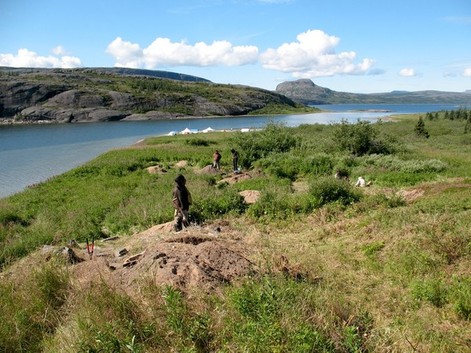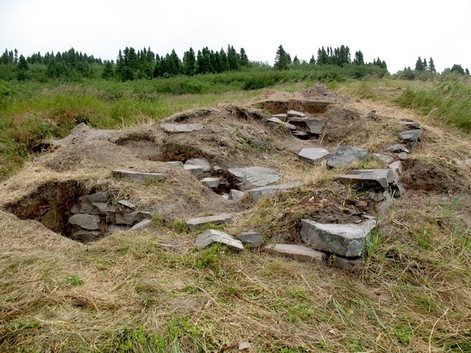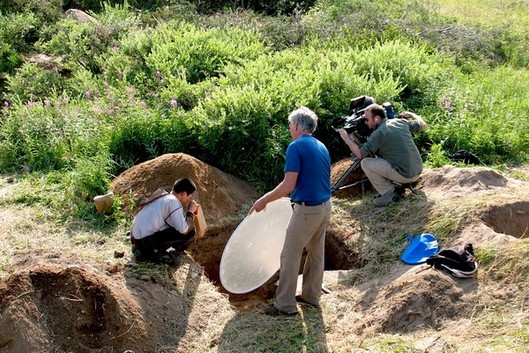Archaeological research on the site of the HBC trading post of Richmond Fort, August 2012
By Christian Roy
On July 30th 2012, a team of two archaeologists—Christian Roy and Benjamin Patenaude for the Avataq Cultural Institute—landed on Cairn Island in Richmond Gulf, about 50 kilometers south of the village of Umiujaq. They were there to complete the archaeological evaluation of the HBC trading post of Richmond Fort (HaGb-11) in operation from 1750 to 1758. Seven students from Umiujaq, Isaac and Tumassie Aragutak, Charlie Crow, Paulossie Inukpuk, Richard Kumarluk, Bobby Nuktie and Joshua Sala, assisted with the archaeological work. The team was accompanied by two hunter/guides: Jobie Crow and Charlie Tooktoo, as well as by the cook Frances Weetaltuk. They were also assisted by Charlie Kumarluk for transportation and logistics. This field-school project was organized by the Avataq Cultural Institute and funded by Nunavik Parks and the Kativik Regional Government, as part of a student employment program. The Cree Regional Authority also provided some funding.
The purpose of the 2012 investigation was to complete the archaeological evaluation of Richmond Fort, first undertaken in 2007, as well as to provide training in archaeology to a group of Inuit students. Over the course of three weeks of fieldwork, a total of 38 test-pits and trenches or about 50 m2 were excavated on the site of Richmond Fort, the earliest HBC trading post erected in the area. The objectives were to locate sections of its palisade and its other bastions, to define the extent of the workshops and the main habitation, and to collect a larger sample of cultural material to better understand the lifestyle of the site’s occupants.
The archaeological investigations produced widely positive results. Although the remaining three bastions could not be located, the missing foundation walls of the southwest bastion were identified, revealing its full dimension and its trapezoidal shape, while some of the structural remains of the workshops, such as portions of a wooden floor and a joist, two wood posts, some firebricks and a large quantity of flat and fire-cracked stones were uncovered in the area of the blacksmith shop. This project also produced a good number of cultural materials, most of which unearthed in the area of the workshops. Clay tobacco pipe fragments, green coloured glass wine bottles and ceramic shards of early London type stoneware, cream-coloured refined earthenware, British tin-glazed earthenware, and oriental porcelain were recovered in association with building hardware and various blacksmith tools. The 2012 investigations at Richmond Fort will be discussed in detail in the forthcoming report.



